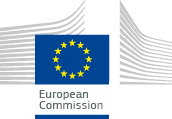PROJECT DESCRIPTION
BACKGROUND
Latvia's Engure and Pape nature parks are feeding and breeding grounds for the bittern (Botaurus stellaris). Lake Engure is the most important Natura 2000 site for the bittern in Latvia, with 30-50 breeding pairs, while Lake Pape is the second most important site, with 25-30 breeding pairs. Between them, these sites are estimated to host between 2% and 15% of the country’s total bittern population. In both lakes, there is sufficient coverage of reed beds, but because of reed-stand spread, overgrowing and drying up, their quality is deteriorating and they are becoming unsuitable for the bittern. To maintain the bittern population, it is necessary to maintain the mosaic of open water and wet reed swamps with shallow waters.
OBJECTIVES
The long-term objective of the LIFE COASTLAKE project was to improve the conservation status of the bittern Botaurus stellaris in Latvia, according to the framework for species conservation set out in the EU Species Action Plan.
The short term objectives of the project were:
- To improve the conservation status of the bittern and to improve ecosystem functions in the two most important coastal lakes for the species – Lake Engure and Lake Pape;
- To reduce the impact of direct and indirect threats to the bittern population by securing sustainable lake habitat management, including the restoration of currently degraded breeding and feeding sites;
- To monitor and evaluate the effects of the lake habitat restoration measures on the species during the project and to feed this information into future site management plans and species management recommendations;
- To establish a demonstration area for species conservation at Lake Engure, in order to eliminate gaps in knowledge about the habitat requirements of the bittern, and to establish widely applicable and regionally tested habitat restoration methods, thus laying the foundations for further bittern conservation work in Latvia and the Boreal region;
- To enhance public understanding of the ecological, economic and social values of coastal wetlands.
RESULTS
The LIFE COASTLAKE project improved conditions for the great bittern on 1 200 hectares at Lake Engure and on 600 hectares at Lake Pape. The project’s actions brought conservation benefits for the Lake Pape and Lake Engure Natura 2000 sites and had a positive effect on two types of habitat – some hard waters with benthic vegetation of several species of green algae and natural eutrophic lakes with certain aquatic vegetation.
The project contributed to the achievement of good conservation status of species listed in Annex I of the EU’s Birds Directive. LIFE COASTLAKE not only improved the conservation status of the target species, but, by using the bittern as an umbrella species, also significantly contributed to improvements in overall ecological conditions at the project sites.
Further information on the project can be found in the project's layman report and After-LIFE Conservation Plan (see "Read more" section).

